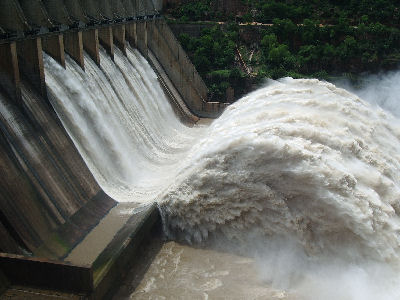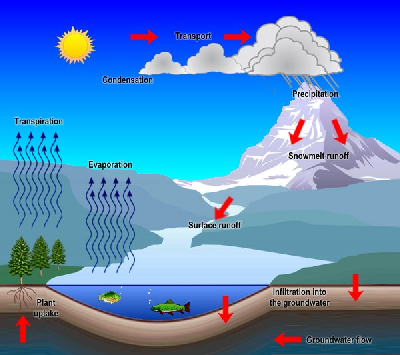2. Water Management
Water as a resource
Water is one of the main ingredients of life. Approximately two-thirds of the human body is water, depending on body size and age. Most organisms in the animal and plant kingdom rely on water to conduct the necessary biochemical reactions in order to survive.
In addition to using water for drinking and cleansing, people also use water for irrigation. Lakes, rivers and seas, also host fish, which is another source of food for people.
Water plays additional environtmental roles. Because it can absorb large amounts of heat before it's temperature increases (heat capacity), the oceans on Earth regulate the temperature of the planet. Furthermore, the oceans have a great capacity of storing CO2, a fact that is crucial these days, with the climate change and global temperature increase caused by the greenhouse effect.
Even though there is a lot of water on the planet, very little is actually available for people. About 97% of all water is in the oceans, which is too salty for drinking. From the remaining 3%, two-thirds is found in the ice caps and glaciers, or is frozen solid, leaving only 1% to be used by us. Water is becoming an increasingly rare commodity, and there are quite a few voices warning that the next global conflict could be fought over water resources.
Because water is so valuable, it is very important that we manage its usage correctly by minimising the losses, avoiding its contamination and making sure that the water stays in the never-ending water cycle.
Water Cycle
The Water Cycle (also known as Hydrologic Cycle) is the journey the water makes from the sky, to the Earth's surface and under the ground, before it emerges back on the surface and moves up in the sky again (see image on the left). There are five main processes that take place during the water cycle:
- Starting with the clouds, the water arrives on the Earth's surface in the form of precipitation (rain, snow or ice/sleet).
- The water reaching the Earth's surface is absorbed by the ground (groundwater) and move to the underground layers of the soil, or will flow on the surface and join rivers, eventually reaching lakes or the ocean.
- When the soil is saturated with water, excess water will flow down the slopes (runoff), forming streams and rivers, eventually reaching a lake or the ocean.
- Water in the soil will then be pulled up on the surface by the root system of vegetation, will change from water to vapour and escape the plant through the cell membranes and leaf pores (transpiration). Another way for the water to re-enter the atmosphere is through evaporation. High temperatures, high winds and low atmospheric humidity all contribute to the evaporation of water from the water bodies (rivers, lakes, oceans).
- Finally, the atmospheric vapours will form clouds (condensation) and when a certain desity is reached, the water will fall to the Earth as precipitation.


